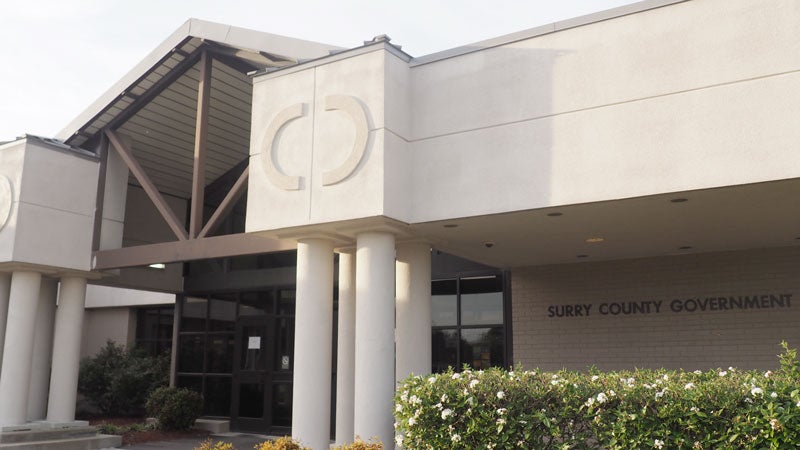How Project Based Learning will be implemented locally, state wide
Published 1:51 pm Wednesday, April 6, 2016
By Matt Leonard
Staff WriterEarlier this month, students in Dawn Carroll’s ninth grade English class worked on a project that required them to create a public service announcement for a local business or nonprofit.
Students sat in their groups as they were instructed on how to use iMovie. Their public service announcement had to be created in the form of a two-minute video.
At their disposal: a cart of Mac laptops, camera equipment and a green screen. {mprestriction ids=”1,2,3,4,5,6″}
“It’s not about the end product or the end project, it’s more about the problems along the way and the process in figuring it out,” said Carroll, who teaches at Windsor High School.
She said the students are responsible for contacting the business, interviewing them and figuring out what information the business wants in the video. After the students finish, they will share the video with the client who will then suggest edits.
Carroll said the entire project would take a few weeks and is replacing a seven-page research paper students have had to do in the past. Aspects of research remain in place, though. Students still have to find and cite their sources and create a narrative based on what they find; the end result is just a video rather than a paper, she said.
She was able to witness project-based learning firsthand when a group of teachers, principals, board members and administrators went High Tech High in California.
High Tech High started as a single charter school and has grown to a network of 13 different schools. In 2005, it received a grant from the California Department of Education to “disseminate project-based learning methods to teachers in non-charter public schools.”
“We emphasize projects at High Tech High because we believe they represent an effective pedagogy,” according to its website, “offering multiple entry points for students with varying learning styles and academic experience.”
Carroll said they had the chance to walk through the school and talk to any student about any project or assignment.
“You could tell that real world communication was being taught on a daily basis and that they were comfortable with that practice,” she said about students being able to communicate clearly when asked about their school.
Isle of Wight is beginning the professional development this summer that will train teachers in how to implement and assess projects in their classroom. Instructors from High Tech High will be doing the training.
Teachers volunteered for this summer’s training, and in the summer of 2017, every teacher will receive the guidance.
Assistant Superintendent Heather Tuck has previously been through the High Tech High training twice at two different school districts.
She said the training is a lot of brainstorming and working with teachers of different disciplines to develop projects teachers can then use in the classroom.
As Isle of Wight continues to implement more project-based learning into classrooms, Tuck said people will have to be patient as the kinks are worked out.
“This is a process and it’s a process that will require the teachers, students and parents to understand,” she said.
This is not just a change being made in Isle of Wight; it is a change that will be made statewide over the next few years, according to Virginia Department of Education’s Chief Academic Officer John Haun.
It started in 2014 when the General Assembly passed two bills that ended Standard of Learning testing in a handful of classes. Haun said the legislation gave school systems a few years to make the switch, but that over time, classes without SOLs would take on performance-based assessments.
School systems were given a good deal of freedom on how to create these assessments, Haun said.
In Isle of Wight, most of the classes created their own assessments right away, according to Tuck. Others continued doing multiple choice tests while the school officials figured out the best way to implement performance-based assessments.
These performances-based assessments will provide scores to projects.
Haun said the state could create overarching standards for how assessments like these are scored, so there is consistency across the state. One way would be to provide a rubric for how teachers can create a project. But regardless of the decision, it won’t be made from top down, he said.
“We need to get away from that,” he said. “We’ve done enough of that over the past 20 years.”
He would like teachers and school systems directly involved with the decision-making process on the future of project-based learning. School systems have the schools and the students, he said; the state administration doesn’t have those resources.
Common praise for project-based learning says it helps students with social skills like communication and allows them to learn for themselves in a way that fosters creativity.
Meredith Keir is an Assistant Professor of Science Education at the College of William and Mary and says project-based learning is an opportunity for students to combine disciplines, and students are often more interested in the process.
“Students are so engaged in this,” Keir said. “When they have the opportunity to be autonomous in their learning and take on larger questions, it’s a much more self-directed way of learning.”
Keir has worked with school systems to help them implement project-based learning and said the teaching skill set needed for this kind of learning is out there, especially in recent education graduates. But training older teachers and getting the entire school system on the same page will require a lot of professional development, she said.
But this approach to learning is not without its critics, who say project-based learning hasn’t been studied enough to ensure its effectiveness over more traditional methods.
In a column for Educational Leadership, Jane David said the research available on the topic shows it can help a student’s learning, but also highlights issues surrounding implementation.
“Together these findings suggest caution in embracing this practice unless the conditions for success are in place,” she writes, “including strong school support, access to well-developed projects, and a collaborative culture for teachers and students.”
Others say traditional teaching methods need to be maintained in classrooms because not all lessons can be taught with projects.
Tuck said that criticism has a point, but the school system was never planning on giving up those aspects of learning in the first place.
“Project-based learning is not about doing projects all the time,” she said. “It’s about going deeper.”
An example used by both Tuck and Haun is learning how to play a sport or ride a bike. Learning the mechanics and rules of a game doesn’t mean someone is good at the game. Putting the rules and mechanics to the test proves ability.
Tuck said that’s what project-based learning is. Teachers will still have to lecture to teach students on occasion, but the knowledge will be put into practice in a way that gives students a real world perspective on the information.
But Haun said it could take five or more years to get to a place where project-based learning is streamlined.
He said there are a couple of different hurdles school systems have to surpass and each has to be perfected. There is the development of the project and then there is the assessment of the project.
“If people think it is going to happen over night, it is not,” Haun said. {/mprestriction}





